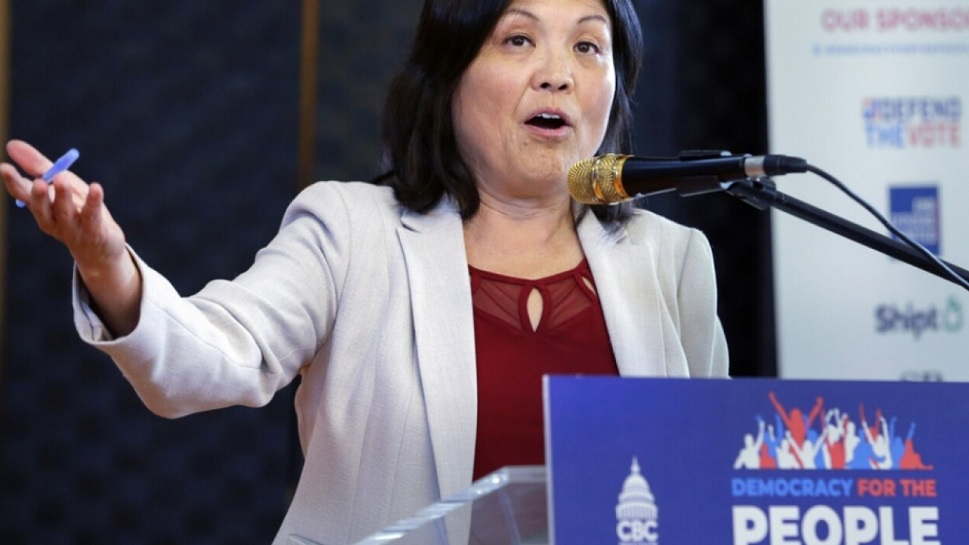
WASHINGTON — The Biden Administration’s Labor Department wants to increase overtime pay coverage, by setting a higher limit—$55,068 a year—below which full-time salaried workers would be eligible for overtime pay. Some 3.6 million workers would immediately benefit.
But even that number, which is almost $20,000 more than the current overtime pay limit of $35,568, is low, a DOL footnote reveals.
That’s because it’s based on median wages from 2022, and if adjusted forward to the last three months of this year, the overtime pay limit would be $59,285. DOL wants that adjustment, too.
Workers who would immediately benefit now earn an average of $914 weekly, but don’t qualify for overtime. And they toil an average of 11.7 hours of OT per worker per week. Some 8,000 of the 3.6 million earn less than the minimum wage.
DOL’s Wage and Hour Division also wants to cover even more workers by narrowing the “administrative, executive, and professional” exemption from overtime pay. Republican President George W. Bush imposed a wide definition of those classes of workers, notably “professional.” It was so huge that newsroom editorial assistants, for example, couldn’t get overtime pay.
Economic Policy Institute President Heidi Shierholz, DOL’s chief economist during the Obama administration, hailed the increase as long overdue. She calculated it would put at least $1.3 billion more into workers’ pockets.
“The overtime threshold has not been properly updated for nearly 50 years, robbing millions of workers of their basic wage and hour rights under the Fair Labor Standards Act,” Shierholz said. “Currently, a worker making just $36,000 a year can be required to work 50- or 60-hour work weeks with no additional pay.
“This proposal would ensure employers have ‘skin in the game’ when they ask these workers to work long hours. As a result, these workers will either get those extra hours back or they will get higher wages when they do work long hours—whether through salary increases or by earning time-and-a-half overtime pay. This proposal is a crucial step in creating a stronger, fairer economy.”
Justifying the increase, DOL laconically noted that “Four years have passed since the 2019 rule, during which time salaried workers in the U.S. economy have experienced a rapid growth in their nominal wages, which lessens the effectiveness of the current salary level threshold.”
“By setting a salary level above 2019” and “using current data,” bosses would not be able to avoid paying overtime to those ‘fewer lower-paid white-collar employees” who are forced to split their work between exempt white-collar tasks and overtime-eligible blue-collar and pink-collar work.
The dollar figure would be higher
Ironically, the agency implied in a footnote its dollar figure could be higher. It set the overtime pay figure, which it wants to automatically increase every three years to match inflation, at 35% of the median pay in the nation’s lowest-income U.S. Census region—which is, of course, the South.
A Wikipedia chart notes the highest median wage in the South in 2021, the year before the numbers DOL used for its proposal, was in Virginia, 11th at $55,310. Virginia, though Southern for the census, has higher concentrations of higher-paid workers, especially in the D.C. suburbs.
Next in the South was Texas at $49,720, 21st among the states. Southern states Tennessee, Alabama, South Carolina, Louisiana, Arkansas, and Mississippi (last, at $39,420) plus border states Oklahoma, Kentucky, and West Virginia all finished 40th or worse.
The department also admitted employers could “continue to use the exemption for many lower-paid white-collar employees made exempt under the 2004 standard” executive, administrative and professional “duties test.” It didn’t identify those workers.
The new overtime pay rule would also not cover agricultural workers—except loggers—and household workers. The Fair Labor Standards Act doesn’t cover those groups, who are mostly workers of color. Their exclusion is a racist relic of when the law was passed in 1938.
But DOL then warned, “Job titles and job descriptions do not determine EAP exemption status, nor does merely paying an employee a salary.” In plain English, to be ineligible for overtime, the person really does have to be an executive, a professional, or an administrator.
Checks of the Chamber of Commerce and National Retail Federation websites, as examples, showed no immediate corporate class reaction to DOL’s plan. Nor did congressional Republicans, though House Education and the Workforce Chair Virginia Foxx, R-N.C., and three others squawked when DOL first started drafting the proposed rule, last year.
“It is not evident there is a real or pressing need to overhaul the current framework, which has only been in place for a scant two years,” Foxx, a notorious hater of workers and unions and then top Republican on the then-Democratic-run panel, said in 2022.
DOL is taking comments on the proposed overtime pay rule for 60 days after it’s published in the Federal Register, on August 30. It prefers electronic comments at www.regulations.gov, for rule 1235-AA39. But it will also take them by mail to the Division of Regulations, Legislation, and Interpretation, Wage and Hour Division, U.S. Department of Labor, Room S-3502, 200 Constitution Avenue, N.W., Washington, D.C. 20210.
We hope you appreciated this article. At People’s World, we believe news and information should be free and accessible to all, but we need your help. Our journalism is free of corporate influence and paywalls because we are totally reader-supported. Only you, our readers and supporters, make this possible. If you enjoy reading People’s World and the stories we bring you, please support our work by donating or becoming a monthly sustainer today. Thank you!










